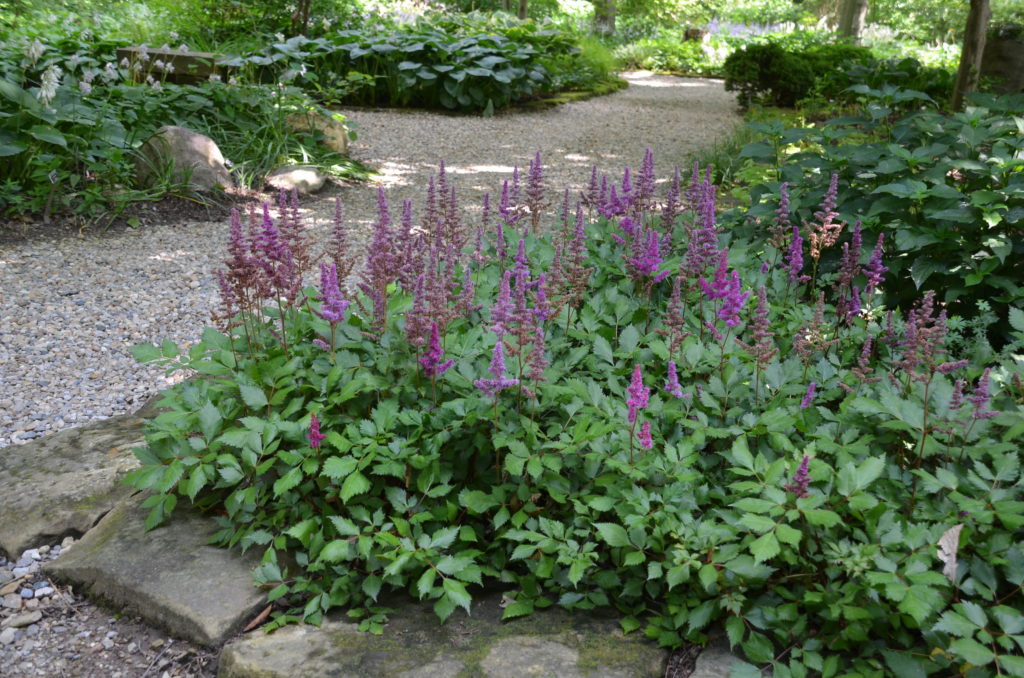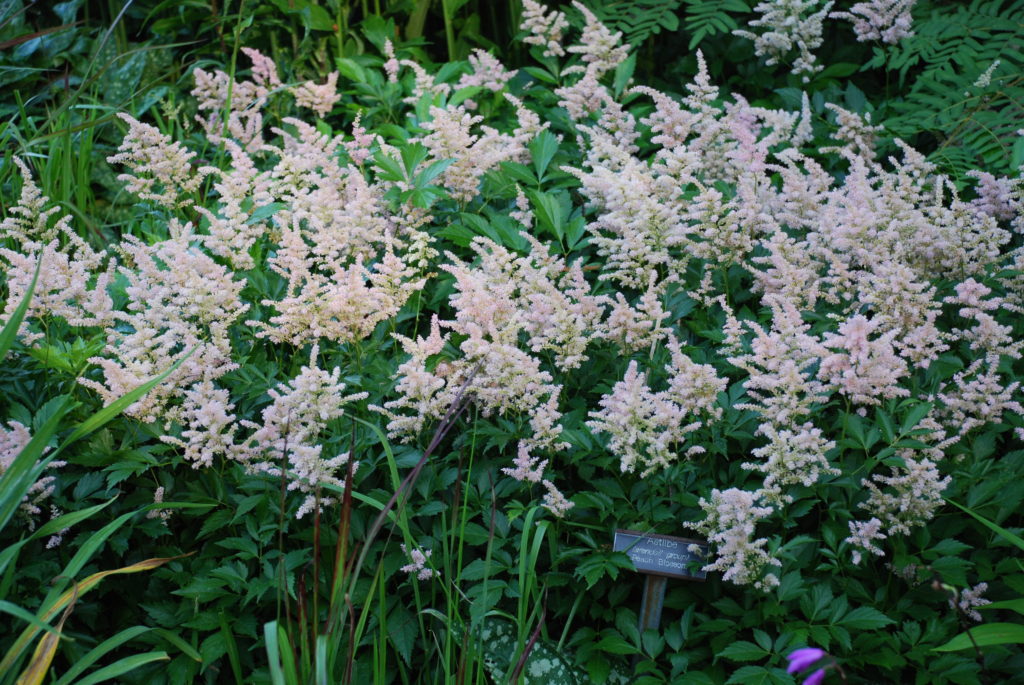
Astilbes, aka false spireas or false goat’s beard, brighten shady gardens with their colorful blooms in early summer. Their plume-like flowers stand tall above astilbe’s deep green lacy foliage. Flower colors vary from white, pinks, and reds, including lavender and violet. Flowers attract butterflies and other pollinators.
Astilbes are generally planted in spring when the soil is cool and moist. They can prosper in a garden over many years if you purchase healthy plants and plant them on the proper site offering adequate light. Plants excel on partially shaded sites, particularly those exposed to 2-3 hours of morning sunlight. In cool northern climes, most astilbe varieties grow under full day sun. Under full shade plants grow, but bear smaller and fewer flowers. (USDA hardiness zones 3-8).

Plant astilbes in a well-drained soil that has been generously amended with compost or humus. Mulch the bed with compost, shredded bark or pine needles to add nutrients, retain soil moisture, keep roots cool, and suppress weeds. Irrigate astilbes over dry periods lasting two weeks and more. Feed plants with a water soluble fertilizer such as Miracle-Gro™ or Peters™ products every 3-4 weeks through mid-summer.
Compact astilbe varieties grow very well in containers. They may be mixed with shade tolerant annuals and other perennials. Locate the container in a shady spot and water regularly to ensure the soil never completely dries out. Astilbes may be planted under deciduous shade trees or along a shady woodland path or pond.
Many cultivars of astilbes are available. Some compact varieties grow only 10-12 inches tall, while others may produce 4-foot flower spikes. Smaller astilbes are ideal for tight spaces, the front of flower borders and in mixed containers.
Astilbes bloom for many years before plants need to be divided. Plants are best divided in early spring or in the fall, using a sharp spade or knife to divide the root crown into sections.
Two species of astilbes are common in U.S gardens: mostly tall growing Arendsii varieties (A. x arendsii) hybridized in Germany and compact growing Chinese hydrids (A. chinensis).

 Posted in
Posted in 
